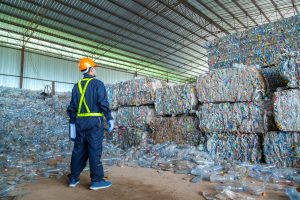The Circular Plastics Alliance – an Innovative EU Initiative within an Overarching Industrial Strategy that Promotes Collaboration
The European Commission uses industrial alliance to facilitate stronger cooperation and joint action between all interested partners. Industrial alliances can play a role in achieving key EU policy objectives. They can make European economies more resilient, ensure the global competitiveness of our industry (including SMEs), support a successful transition to a carbon-neutral continent by 2050. This is why industrial alliances can be used as one of the delivery vehicles for relevant European strategies, e.g. on hydrogen, raw materials or plastics.
Industrial alliances bring together a wide range of partners in a given industry or value chain, including public and private actors and civil society. Industrial alliances have the following characteristics:
- Built around a common goal to implement EU policy objectives
- Involve all relevant partners (EU countries, regions, industry, financial institutions, private investors, innovation actors, academia, research institutes, civil society, trade unions, and others) along the value chain
- Based on the principles of openness, transparency, diversity and inclusiveness and comply with competition rules
- Are not involved in decision making on policy, regulation or financing
- No direct funding for alliances and they do not prejudge potential Important Projects of Common European Interest (which are designed by EU counties and need a separate approval by the Commission).
To drive the momentum that began with the launch of the EU Plastics Strategy further from the business community, the EU Commission launched the Circular Plastics Alliance to help bridge the gap between the supply and demand for recycled plastics. The alliance covers the full plastics value chains and includes over 300 organisations representing industry, academia and public authorities. The Circular Plastics Alliance has committed to boosting the EU market for recycled plastics to 10 million tonnes by 2025. The CPA takes action to reach this target and publishes monitoring and reporting activity.
The alliance has committed to: identify untapped potential for improving quantity recycled; map investment needs in recycling facilities in each member state; identify untapped potential for collection and sorting; map investment needs in collection and sorting facilities and infrastructures in each member state; identify legal, economic and technical obstacles to more uptake of recycled plastics; map investments needs in collection, sorting, recycling and converting of plastics, and list the barriers; set up a monitoring system to track collected and sorted recycling.
URLs
The Circular Plastics Alliance General Assembly Meeting 2022



